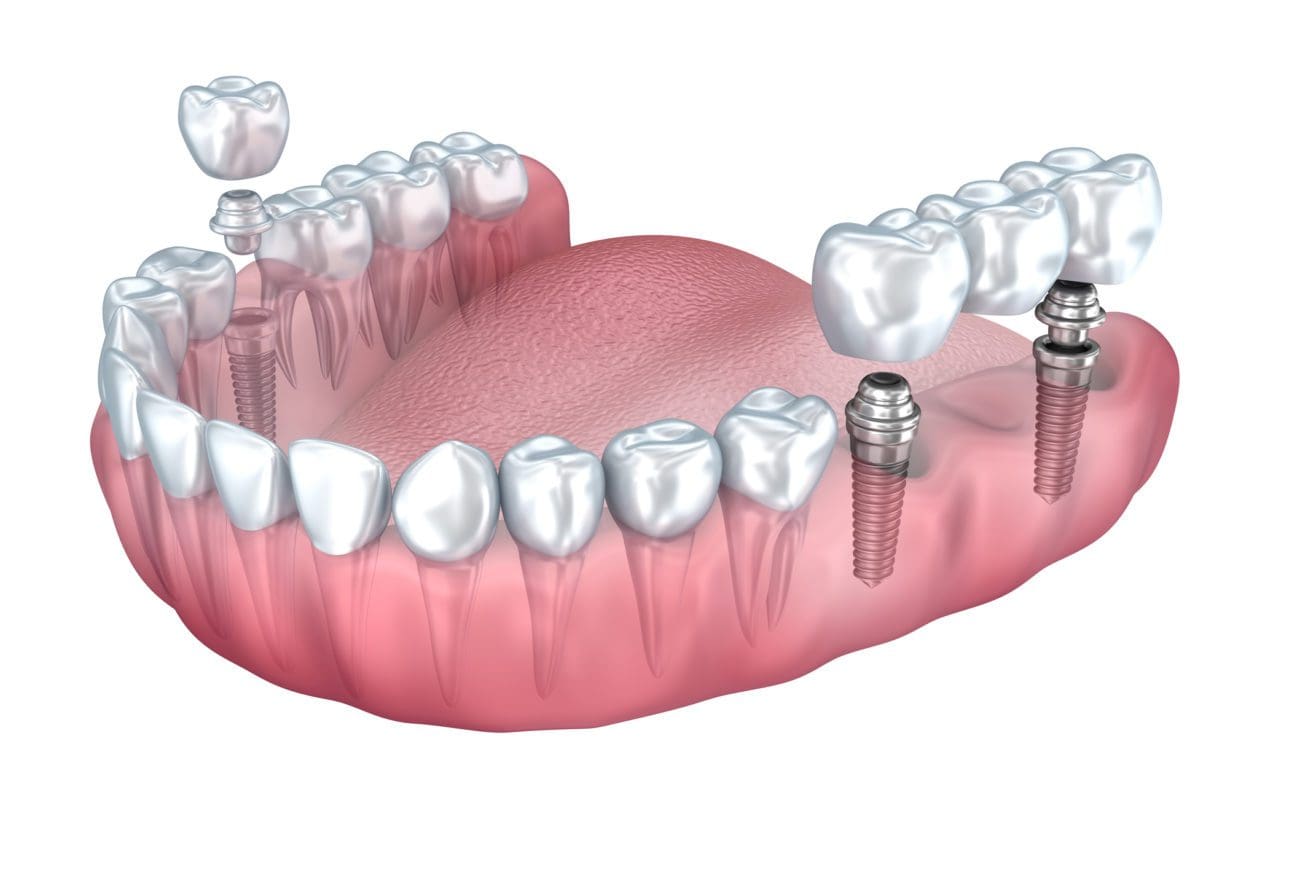Not known Details About Dental Sense
Not known Details About Dental Sense
Blog Article
The Definitive Guide for Dental Sense
Table of ContentsWhat Does Dental Sense Mean?Not known Facts About Dental SenseThe Definitive Guide for Dental SenseThe Basic Principles Of Dental Sense
are medical devices operatively implanted into the jaw to recover a person's ability to chew or their look. They supply support for fabricated (phony) teeth, such as crowns, bridges, or dentures. When a tooth is shed due to injury or illness, a person can experience problems such as fast bone loss, defective speech, or adjustments to chewing patterns that lead to discomfort.Dental dental implant systems include an oral implant body and oral implant joint and may likewise include an abutment addiction screw. Kids dental. The dental implant body is surgically inserted in the jawbone in area of the tooth's root. The dental implant abutment is normally attached to the dental implant body by the abutment addiction screw and expands with gums right into the mouth to support the connected man-made teeth
(http://peterjackson.mee.nu/where_i_work#c2504)Structure of The Oral Implant System selecting dental implants, talk to your dental supplier about the prospective advantages and risks, and whether you are a prospect for the procedure. Points to consider: Your total health is an essential aspect in determining whether you are an excellent candidate for oral implants, just how long it will certainly require to heal, and exactly how long the dental implant might remain in location.
Smoking cigarettes might influence the healing process and reduce the long-lasting success of the dental implant. The healing process for the implant body might take numerous months or longer, throughout which time you usually have a short-term joint instead of the tooth. the oral implant treatment: Meticulously adhere to the oral hygiene instructions offered to you by your dental provider.
Top Guidelines Of Dental Sense
Implant failing can lead to the requirement for another procedure to deal with or change the implant system. Brings back the ability to chew Brings back cosmetic look Assists keep the jawbone from diminishing because of bone loss Preserves the wellness of the bordering bone and periodontals Helps maintain surrounding (close-by) teeth stable Enhances lifestyle Damage to surrounding natural teeth during implant positioning Injury to the surrounding tissues throughout surgical procedure, such as sinus perforation Injury during surgical procedure (for example, crack of bordering jawbone) Poor feature, such as feeling like the teeth do not bite together usually A sensation that the tooth hangs or twisting in position arising from a joint screw loosening up Implant body failure (looseness of the implant body) due to systemic infection, which might be extra most likely in clients with uncontrolled diabetics issues as a result of regional infection in bone and gums supporting the dental implant body due to delayed recovery, which may be most likely in people who smoke Difficulty cleaning up the gums around the dental Discover More implant, resulting in inadequate oral health Neglected gum condition Post-surgical numbness because of nerve impingement or damage Constantly inform healthcare companies and imaging specialists that you have dental implants prior to any type of magnetic vibration imaging (MRI) or x-ray treatments.
FDA is not knowledgeable about any unfavorable events reported for MRI or x-ray procedures with oral implants. Oral implants systems are usually made of products that follow global agreement standards of the International Organization for Standardization (ISO) or ASTM International. These requirements have information of what makes a safe material.

A dental implant is a framework that changes a missing tooth. With screw-like devices, the cosmetic surgeon inserts a dental implant into the jawbone, and it works as an anchor for a man-made tooth, called a crown. A gadget called an abutment connects the artificial tooth to the dental implant. The crown is custom-made to fit the person's mouth and match the shade of their teeth.
An Unbiased View of Dental Sense
Some people are not qualified for dental implant surgery. It is for oral doctors to operate people with: acute illnessuncontrollable metabolic diseasebone or soft tissue illness or infectionIf these concerns are solved, a person can have the surgery. In, oral surgeons refrain from operating individuals with: If people with any of the above go through dental implant surgical procedure, there is a higher threat of the implant falling short.

Dental dental implant surgery is a tailored procedure. It's not the very same for everyone. However the complying with offers a general review of what you can expect your dental practitioner, oral specialist, periodontist or prosthodontist to do: Put the dental implant surgically. Offer you time to heal. Connect the message and last crown, bridge or denture.
Next, your surgeon will meticulously place the dental implant into your jaw. If your implant is near the front of your mouth, your dentist will make a temporary tooth for you to put on until you heal.
The Only Guide for Dental Sense
During the recovery stage, your jawbone must fuse to the oral implant. This process can take anywhere from three to 9 months.
When your implant heals, your dental professional can attach the abutment (small adapter message) and your last reconstruction (crown, bridge or denture). This typically takes about one hour to finish and might require a second small surgical procedure. You shouldn't really feel any kind of discomfort during your oral implant treatment since your provider will certainly utilize medicine to numb your gums.
Report this page